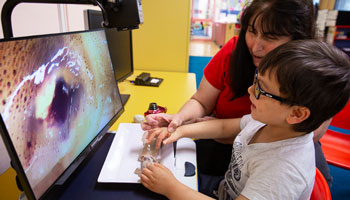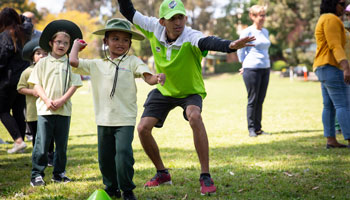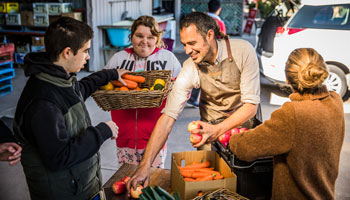Explore ways to facilitate a positive back to school transition for students with additional needs.
Returning to school after a long period of absence may involve a range of considerations for students with additional needs. This can include reconnecting with peers and teachers, re-establishing routines of learning and study, and for some, missing the close daily contact with family and siblings.
For families, there may be relief that their children have returned to the classroom environment and life is 'getting back to normal'. There may also be fears about their child’s ability to manage, and how they can best work alongside the school to provide support during any transition period.

For some students, the transition back to school may be gradual.
Practical steps for a smooth transition
Planning
Collaborative planning involving the student, their parent/s or carer/s will continue to be the first step in developing an appropriate plan for a smooth transition back to school. Discussing the student’s needs and options for how the school can best support them will enhance the process.
Gradual transition to school
For some students with additional needs, the transition may be gradual and include a combination of schoolwork completed at home and face to face days. As part of this arrangement, considerations would include:
- ways to ensure communication between the family, the student and the school is consistent and conducted regularly
- ways to ensure communication at school to staff and other students creates understanding of the student’s condition or additional needs
- an understanding that changes in community health may either aid return to school or result in the need for a slower transition.

Discussing changes to classroom routines can help students adjust.
Timetables
Providing clarity around the school day will reassure and prepare the student for the daily routine. Even though school has returned, there are likely to be significant changes to the timetable such as no assemblies or sport, and these need to be communicated to the student well in advance. Tailoring this information to the needs of the student may mean the development of a personalised timetable so that the student can see the changes and what will be in place as an alternative. This could include visual timetables or colour coding changes on the regular timetable. Discussing these changes with the student will help to ease any anxiety that may be present.
Connections and relationships
Relationships and connections are at the core of providing appropriate support for students with additional needs in their transition back to school. Implementing a structure to provide consistent, frequent school connections with individual students is an effective way to re-establish school as a place of safety and strong personal relationships.

Relationships need to be systematically fostered between the student with additional needs and their peers.
Check-in
Maintaining regular check-ins with individual students from a trusted and known member of the school team provides an opportunity for the teacher to gauge the student’s current state. This also reinforces for the student that the school and staff member are interested in them personally. This may include contact with the class teacher, homeroom teacher or year coordinator. The frequency will depend on the needs of the student and the availability of the student and the teacher.
Peer to peer
Relationships need to be systematically fostered between the student with additional needs and their peers during this period of transition. During the transition back to school, students may benefit from structured activities at lunch and recess to reconnect and re-establish the existing relationships with peers. This may include connecting via lunch clubs, chess clubs, or any other activities that the students enjoy.

Students may benefit from structured activities at lunch and recess to reconnect.
School as community
Welcoming every student back has been a feature as schools have started to re-open. It is helpful if this welcome is tailored for the student with additional needs, facilitated through a trusted member of staff, to create a greater sense of connectedness.
Insights from the field
Bronwyn Thoroughgood, Principal D.A.L.E says: “A gradual transition back to full time will enable students to become comfortable in the school environment again.”
Letitia Graham Coordinator Learning Support Clarence Valley Anglican College: “Many students have deep anxieties about returning to school and are feeling overwhelmed. Other students are very hyped and need frequent structured reminders of school structures and routines. Teachers are using visuals to remind them of expectations.”
Please access this information sheet to read more on key considerations to support the transition back to school for students with additional needs.
Images courtesy of the Royal Institute of Deaf and Blind Children and Warrah Specialist School.
New to AISNSW and want to receive AISNSW Education News updates? Click here to register, and select ‘AISNSW Education News’ on the Areas of Interest/Subscriptions page.